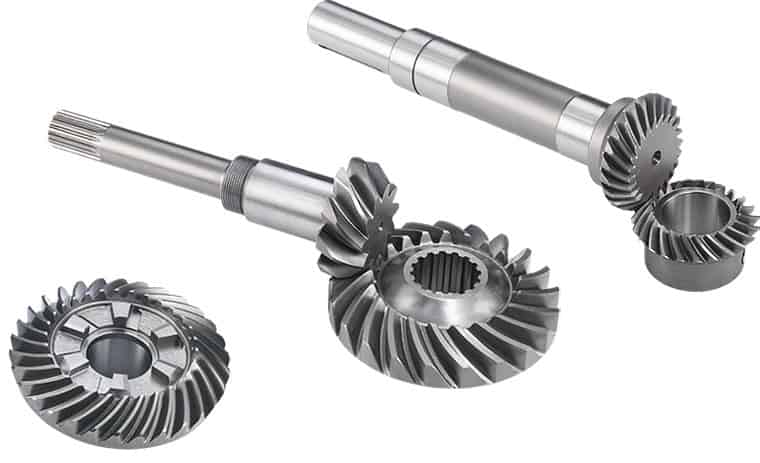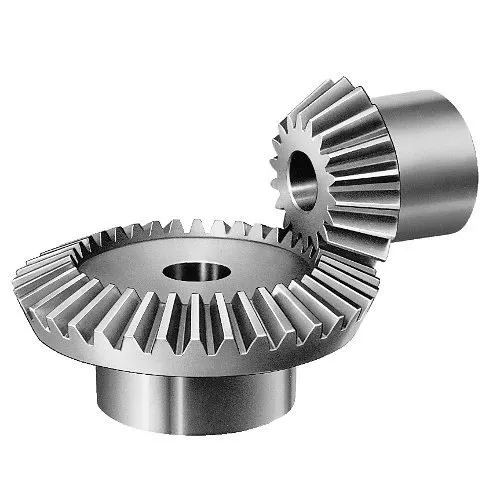Product Description
EWS series adopts helical gear – worm gear speed reducer motor integrated drive to improve the torque and efficiency of the speed reducer with wide range of rotating speed and good universality, it is applicable to varied installation modes and features safe and reliable performance, and long service life, additionally, it also complies with the international standard.
Characteristic advantage
1.Combination of helical gear and worm, vertical output, compact structure, high speed ratio.
2.The concave-convex surface of the product provides the function of heat dissipation, and features strong vibration absorption, low temperature rise, low noise.
3.The product features high drive precision, and is especially suitable for the site with frequent start, is can be connected with varied speed reducers and configuring varied motor drives, and can be installed at the 90º drive operation site.
Specification parameter
Installation type : Foot,flange,small flange,torque arm.
Output type : Solid shaft,hollow shaft,hollow shaft with shrink disk,spline hollow shaft.
Input type : Motor,input shaft and flange
technical parameters : ratio i=23.8~389,combination of EWS/EWR is up to26688
Efficiency : ratio i=23.8~389,77%;ratio i=73.7~389,62%;and combination of EWS/EWR57%.
Industrial Application
Power Plant Equipment
Metallurgical Industry
Metal Forming Machinery
Petrochemical Industry
Mining Machine
Hoisting Machinery
Construction Industry
Environmental Protection Industry
Cable Industry
Food Machinery
Certificates
Passed ” ISO 9001 International Quality System Certificate”,”Europe CE Certificate”, ” Swiss SGS Certificate”,”High-tech enterprise certificate of ZheJiang city”,”Excellent performance management enterprise of ZheJiang city”,etc.
FAQ
1. Q: Can you make as per custom drawing?
A: Yes, we offer customized service for customers.
2. Q: Are you a factory or trading company?
A. We are manufacturer in ZheJiang China.
3. Q: What’s your MOQ?
A: One piece.
4. Q: What’s your production time?
A: 7-15 working days after receiving payment.
5. Q: What’s your payment terms?
A: T/T, 30% payment in advance, 70% balance payment should be paid before shipping.
6. Q: What’s your package?
A: In wooden box packaging.
ZheJiang CHINAMFG Gear Reducer Co.,Ltd., former a joint venture invested by is a ZheJiang CHINAMFG GROUP and Well Company of America.We are professional manufacturer of the gear reducers and specialize in the gear reducers area in China for 20 years. CHINAMFG has excellent R&D team,top-ranking production and test equipment.So we have the strong power in the developing and manufacturing the standards type as well as the customized type gear reducer for our customers.
| Application: | Machinery |
|---|---|
| Hardness: | Hardened Tooth Surface |
| Installation: | 90 Degree |
| Gear Shape: | Helical Worm Gear |
| Step: | Three-Step |
| Type: | Worm Reducer |
| Customization: |
Available
| Customized Request |
|---|

What are the limitations of using miter gears in certain applications?
Miter gears, like any other mechanical component, have certain limitations that may restrict their use in certain applications. While miter gears are versatile and widely used, it’s important to consider their limitations to ensure proper selection and application. Here are some limitations of using miter gears:
- Higher Friction: Miter gears typically have higher friction compared to other types of gears, such as spur gears or helical gears. This can result in increased power losses and reduced efficiency, especially in applications where minimizing friction is critical.
- Lower Load Capacity: Miter gears generally have a lower load-carrying capacity compared to gears with parallel or helical tooth arrangements. The nature of their intersecting shafts and smaller tooth engagement area can limit their ability to handle heavy loads or transmit high torque.
- Sensitivity to Misalignment: Miter gears require precise alignment for optimal performance. Even slight misalignment between the shafts can result in increased noise, vibration, and accelerated wear. In applications where maintaining precise alignment is challenging, alternative gear types may be more suitable.
- Limited Speed Range: Miter gears may have limitations in terms of the speed range they can effectively operate at. High speeds can lead to increased noise, heat generation, and potential tooth failure due to centrifugal forces. It’s essential to consider the specific speed requirements of the application and select gears accordingly.
- Complex Manufacturing: Miter gears with specific angles, such as non-90-degree gears, require more complex manufacturing processes compared to standard 90-degree miter gears. This complexity can result in higher costs and longer lead times for custom or non-standard gear configurations.
Despite these limitations, miter gears continue to be widely used in various applications where their unique characteristics and advantages outweigh the drawbacks. It’s important to carefully evaluate the specific requirements of the application and consider alternative gear options if the limitations of miter gears pose significant challenges.

What are the variations in miter gear designs and configurations?
Miter gears come in various designs and configurations to suit different application requirements. Here are some common variations:
1. Straight Bevel Gears:
Straight bevel gears are the most basic type of miter gears. They have straight teeth that are cut along the cone surface. Straight bevel gears are widely used and offer efficient power transmission, but they generate more noise and vibration compared to other designs.
2. Spiral Bevel Gears:
Spiral bevel gears have curved teeth that are cut in a spiral pattern along the cone surface. This design helps to reduce noise and vibration, improves load distribution, and provides smoother operation compared to straight bevel gears. Spiral bevel gears are commonly used in high-performance applications.
3. Zerol Bevel Gears:
Zerol bevel gears are similar to spiral bevel gears but have curved teeth with a spiral angle of zero degrees. This results in the teeth being parallel to the gear axis at the point of contact. Zerol bevel gears offer advantages such as reduced tooth thrust, improved tooth strength, and smoother meshing compared to other designs.
4. Hypoid Gears:
Hypoid gears are a variation of miter gears that have non-intersecting and offset axes. The axes of the gears do not intersect but are positioned at an angle to each other. Hypoid gears are commonly used in applications where high torque transmission is required, such as automotive differentials.
5. Skew Bevel Gears:
Skew bevel gears have teeth that are cut at an angle to the gear axis, resulting in a skewed or helical appearance. This design reduces noise, increases tooth contact area, and improves load distribution. Skew bevel gears are often used in applications where smooth and quiet operation is critical.
6. Offset Miter Gears:
Offset miter gears are used when the input and output shafts need to be offset from each other. They have specific tooth profiles to accommodate the offset arrangement while maintaining proper meshing and transmission of rotational motion. Offset miter gears are commonly found in machinery where space constraints or specific design requirements exist.
7. Customized Designs:
In addition to these variations, miter gears can be customized to meet specific application needs. This may involve modifications to the tooth profile, pitch angle, tooth size, or other parameters to optimize gear performance for a particular use case.
In summary, miter gears offer various design and configuration variations, including straight bevel gears, spiral bevel gears, zerol bevel gears, hypoid gears, skew bevel gears, offset miter gears, and customized designs. Each variation has unique characteristics that make it suitable for different applications, allowing for flexibility and adaptability in gear system design.

Can you explain the unique design of miter gear teeth?
The design of miter gear teeth is distinct and plays a crucial role in the functionality of these gears. Here’s a detailed explanation:
1. Tooth Shape:
Miter gear teeth have a straight shape, similar to spur gears. However, unlike spur gears where the teeth are parallel to the gear axis, miter gear teeth are cut at a right angle to the gear’s face. This allows the teeth to engage correctly when two miter gears mesh together at a 90-degree angle.
2. Equal Number of Teeth:
Miter gears have an equal number of teeth on both gears in a pair. This ensures proper meshing and smooth transmission of rotational motion between the gears. The equal number of teeth is essential for maintaining a constant speed ratio and preventing any slippage or irregular motion.
3. Conical Shape:
Another unique aspect of miter gear teeth is the conical shape of the gears themselves. The teeth are cut on the conical surface, which allows for proper engagement and transmission of motion between intersecting shafts. The conical shape ensures that the teeth mesh correctly, providing efficient power transmission at the desired angle.
4. Meshing at 90-Degree Angle:
Miter gears are designed to mesh at a 90-degree angle, allowing for power transmission between intersecting shafts. The teeth are specifically cut to facilitate this arrangement, ensuring that the gears engage smoothly and transmit rotational motion without any loss or disruption.
5. Tooth Contact and Load Distribution:
When miter gears mesh, the contact between the teeth occurs along a single line, known as the line of contact. This concentrated contact area enables effective load distribution and ensures that the gear teeth bear the transmitted torque evenly. Proper tooth contact is vital for minimizing wear and maintaining the longevity of the gears.
6. Lubrication and Noise Reduction:
The unique design of miter gear teeth can influence lubrication and noise levels. Adequate lubrication is essential to reduce friction and wear between the teeth during operation. Additionally, the straight tooth profile of miter gears tends to produce more noise compared to gears with helical or curved teeth. Proper lubrication and noise reduction measures are often employed to optimize the performance of miter gears.
In summary, the unique design of miter gear teeth includes their straight shape, equal number of teeth, conical shape of the gears, meshing at a 90-degree angle, tooth contact along a line, and considerations for lubrication and noise reduction. These design features ensure efficient power transmission, proper load distribution, and reliable operation in mechanical systems that utilize miter gears.


editor by CX 2023-11-07
